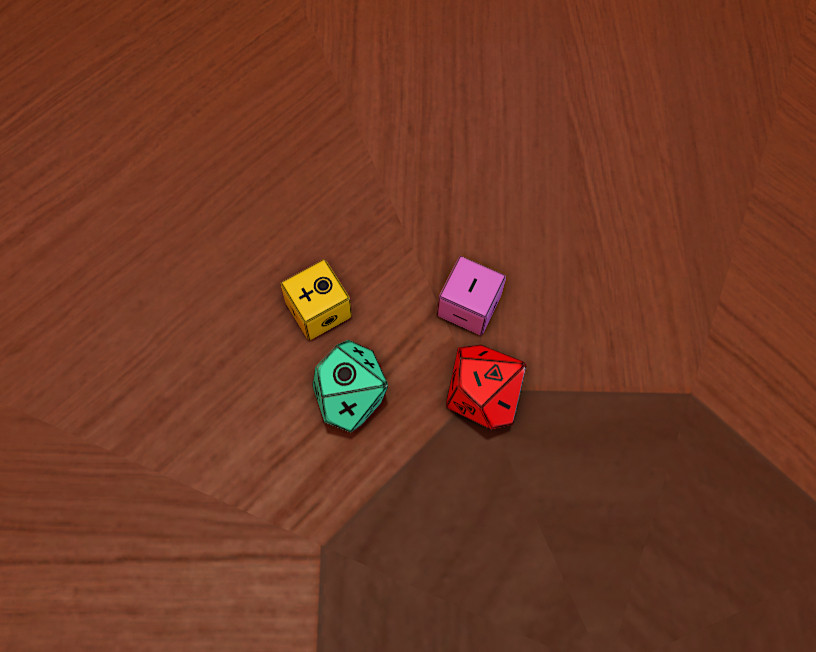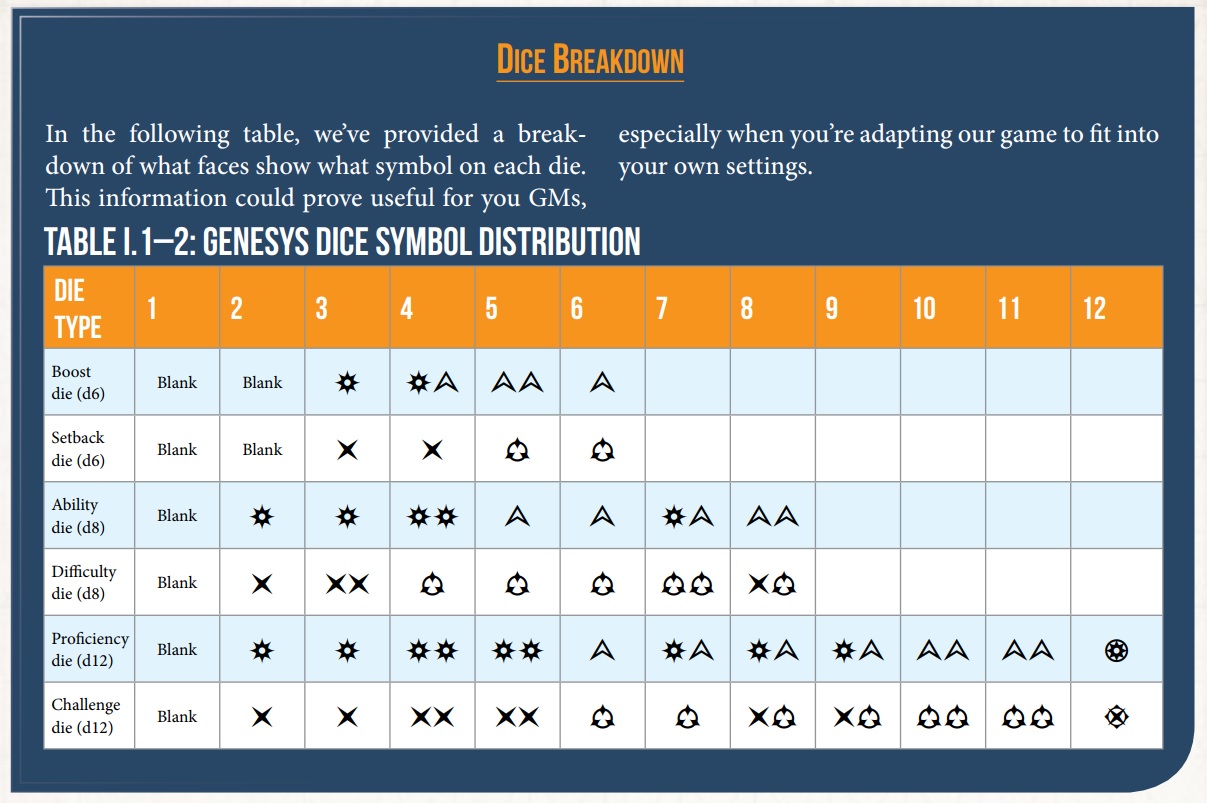This jam came at the perfect time, and with the perfect time frame, because this is one of the projects I'm planning for this year.
So, I want to create symbol dice that are open source. They are very much inspired by Fantasy Flight Games' Genesys dice, but they are distinct in colors, shapes and in symbol spread. I was always kind of peeved how the brilliant Narrative dice were just completely shut in to the FFG ecosystem, and seeing how they got bought out by Embracer group, I think there is little chance of those dice ever being used for new games again. Additionally, there are SO MANY WAYS to use symbol dice that open up completely new design avenues to RPGs.
Here's what they currently look like (on Tabletop Simulator).
- Make a sort of quickstart for the dice which goes through the dice in essence (This is probably Prio 1 for obvious reasons)
- Make various short games that utilize the dice to show different use cases
- Make a dice roller app for them
- Make 3d-printable models / a dice sheet for printing
- Go to various dice suppliers to see if I could get them to put them to their roster (Likely very low prio, but it would be a massive boost if successful)
I'm also open to hearing about other ideas what could be done. I just REALLY want to get these to the hands of designers and players, because I feel like symbol dice have so much untapped potential.





